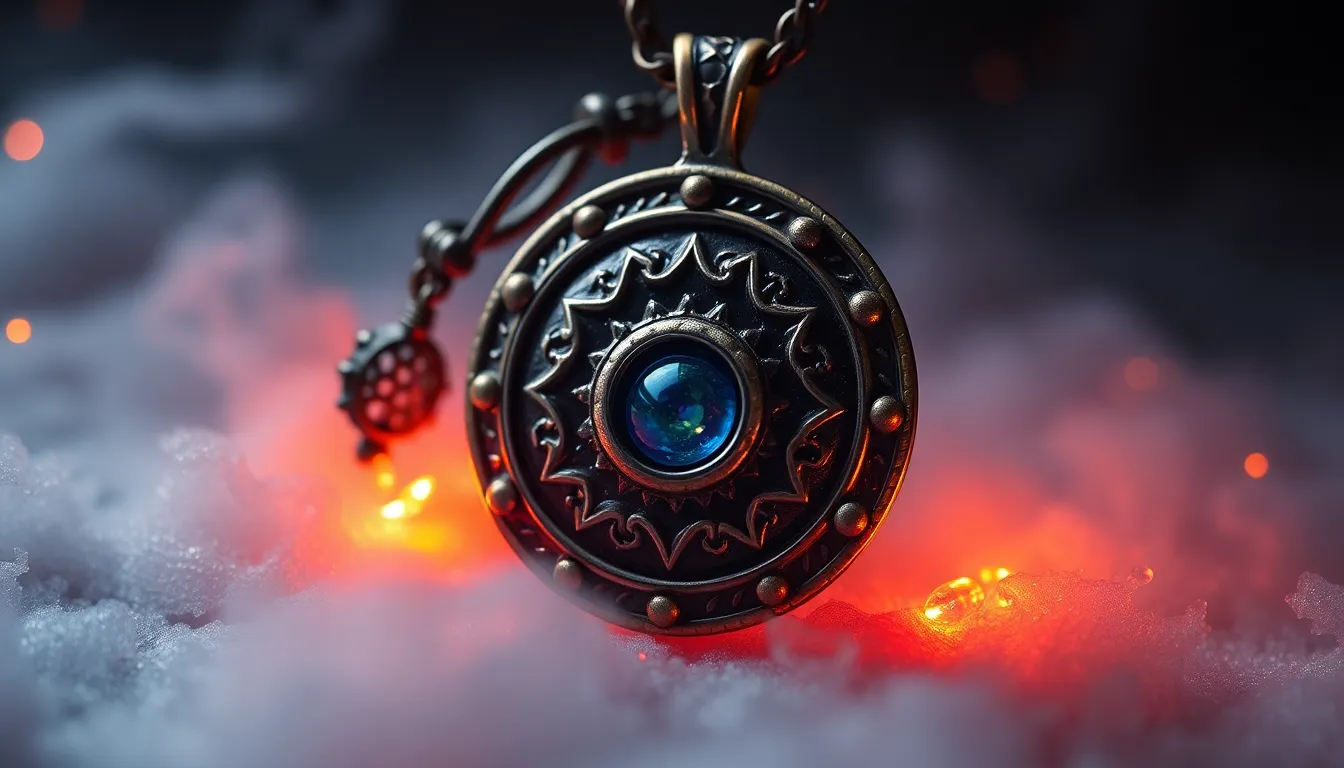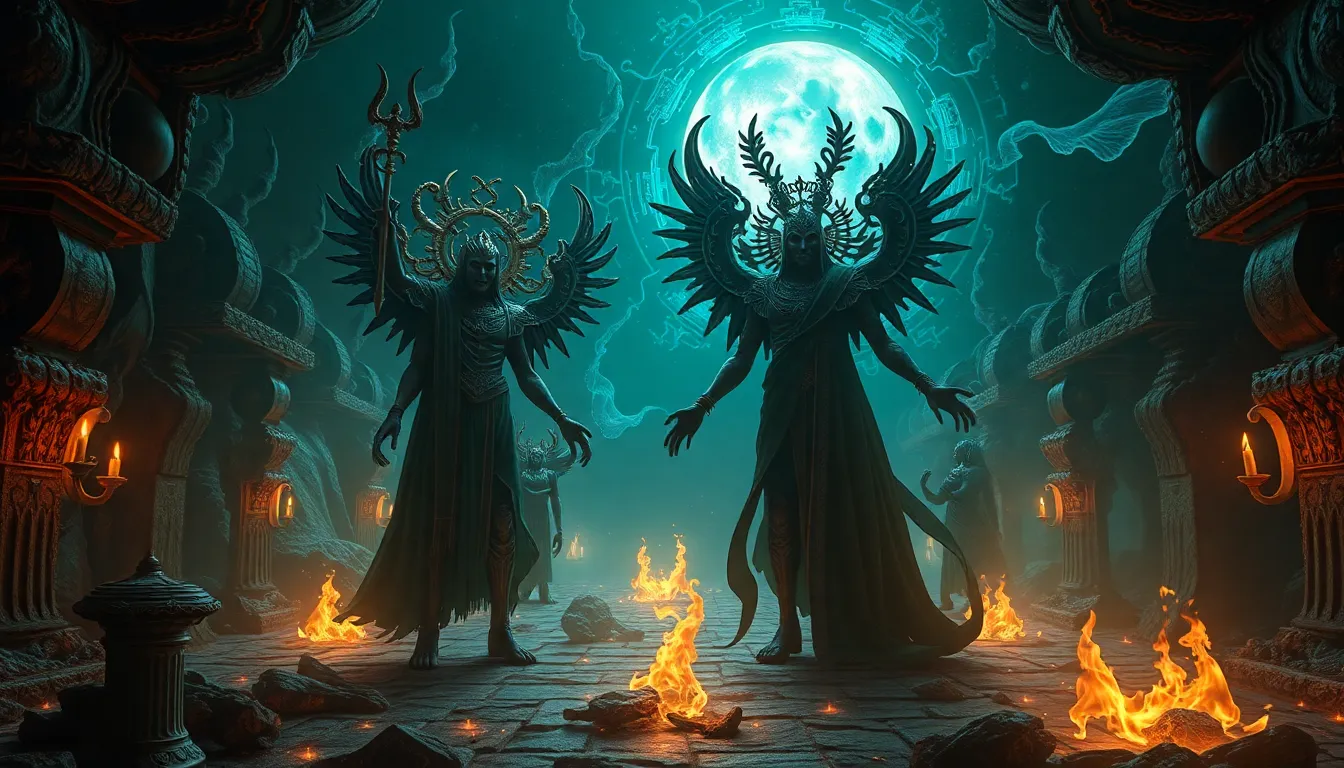The Heart of a Monster: Unlikely Love Stories in Myths
Introduction: The Allure of the Monster
Throughout history, myths and folklore have explored the theme of love in a myriad of ways. Central to many of these narratives are figures often labeled as monsters, beings that evoke both fear and fascination. The term “monster” can vary widely across cultures, encompassing everything from fearsome beasts to misunderstood creatures yearning for acceptance. In this exploration, we delve into the unlikely love stories between humans and monsters, revealing the profound lessons these tales impart about acceptance, transformation, and the nature of love itself.
Defining Monsters: From Fearsome Beasts to Lovable Characters
The archetype of the monster has evolved significantly in mythology. Originally depicted as embodiments of chaos and destruction, many monsters have transitioned into complex characters that reflect societal fears and desires. Cultural variations abound, with some examples including:
- Greek Mythology: The Minotaur, a creature born of human and beastly nature.
- Norse Mythology: Fenrir, the monstrous wolf that embodies fate and destruction.
- Asian Mythology: Dragons, often revered as wise and benevolent beings in contrast to their fearsome Western counterparts.
The psychological appeal of these figures lies in their duality; they represent both the darker aspects of humanity and the potential for redemption and understanding.
Mythical Love: A Catalyst for Transformation
In many myths, love serves as a powerful catalyst for transformation. The notion that love can change the very nature of a monster is a recurring theme. For instance, in numerous tales, a beastly exterior may conceal a noble heart, and it is through love that this inner beauty is revealed. Some key examples include:
- The transformation of the Beast in “Beauty and the Beast” through Belle’s love.
- The redemption of Medusa, who is often portrayed as a tragic figure in modern retellings.
These narratives highlight love as a redemptive force capable of overcoming the most profound fears and prejudices.
Famous Unlikely Couples: Love Beyond Boundaries
Among the most notable stories of love between humans and monsters are:
Case Study 1: Beauty and the Beast (French folklore)
This classic tale revolves around a young woman named Belle and a Beast, who is under a curse. The story encapsulates themes of acceptance, inner beauty, and the transformative power of love. As Belle learns to see beyond the Beast’s exterior, she ultimately breaks the curse, illustrating the idea that true beauty lies within.
Case Study 2: Eros and Psyche (Greek mythology)
The story of Eros and Psyche is another compelling narrative of love overcoming adversity. Psyche, a mortal woman, faces numerous trials imposed by Eros’s mother, Aphrodite. Their journey is marked by challenges that test their trust, commitment, and perseverance, ultimately leading to Psyche’s transformation into a goddess. This tale emphasizes the significance of faith and resilience in love.
The Role of Gender in Monster Mythos
The portrayal of gender within the context of monstrosity also warrants examination. Female monsters, such as Medusa and Lilith, often embody societal fears regarding femininity and sexuality. Their stories frequently depict themes of vengeance and transformation. In contrast, male monsters, such as Frankenstein’s creature, often evoke sympathy and explore themes of isolation and rejection. This contrast highlights the differing societal views on monstrosity and femininity, challenging traditional narratives regarding gender roles.
Cultural Perspectives: Monsters in Different Mythologies
Across various cultures, love stories involving monsters reveal both common themes and unique variations. For instance:
- Japanese Mythology: The tale of the Kappa, a water-dwelling creature, often showcases the complexities of love and redemption.
- African Mythology: Stories of shapeshifters often explore themes of transformation and love in ways that challenge conventional norms.
- Indigenous Mythologies: Many narratives feature trickster figures, who embody both monstrous and heroic qualities in their pursuit of love.
These stories highlight the universality of love while reflecting cultural values and beliefs.
The Consequences of Love: Sacrifice and Redemption
Love often demands sacrifice, particularly in narratives featuring monsters. The depths of this theme can lead to tragic outcomes. One poignant example is the story of Orpheus and Eurydice, where Orpheus’s love for his wife drives him to the underworld to retrieve her. However, his inability to trust and his subsequent actions lead to tragic consequences. This tale serves as a reminder of the delicate balance between love and loss, and the sacrifices one may make in the name of love.
Modern Interpretations: Monsters in Contemporary Literature and Film
The reinterpretation of ancient love stories continues in modern literature and film. Contemporary narratives frequently revisit the idea of love between humans and monsters, offering fresh perspectives on age-old themes. Notable examples include:
- The Shape of Water: A film that explores the love between a mute woman and a fish-like creature, challenging societal norms of beauty and acceptance.
- Warm Bodies: A novel and film that depict a romantic relationship between a zombie and a human, exploring themes of humanity and connection.
These modern adaptations not only breathe new life into ancient myths but also reflect contemporary cultural values regarding love and acceptance.
Psychological Insights: What Monster Love Teaches Us
The narratives of love between monsters and humans provide profound psychological insights. They challenge us to confront our fears of the unknown and embrace the complexities of love. Key lessons include:
- The importance of seeing beyond appearances to understand true character.
- The capacity for transformation that love can inspire in both individuals and relationships.
- The recognition that monstrosity can exist within all of us, and that love can be a powerful force for healing and redemption.
In exploring these unlikely love stories, we uncover the heart of what it means to love and be loved, transcending boundaries and embracing the monsters within ourselves.



